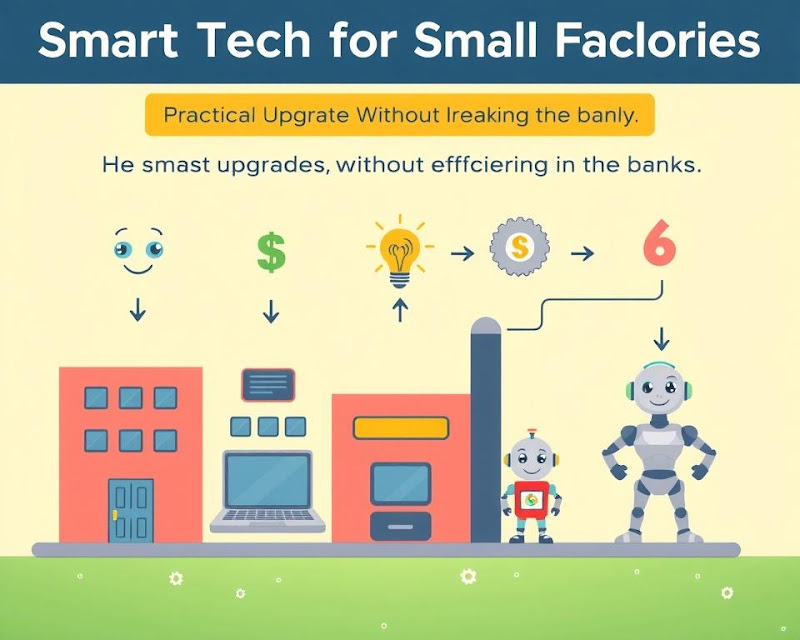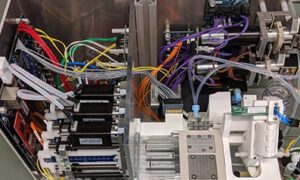When the owner of Oak & Grain, a small furniture workshop, decided to upgrade their production line, they went the traditional route: buying a second-hand industrial saw and hiring two extra workers. “This’ll speed things up,” the manager assured the team. But within weeks, the old machine kept jamming, and the new hires struggled with the finicky equipment. “We’re losing more time fixing it than actually cutting wood,” one worker grumbled, wiping sawdust off his brow. The budget for repairs ballooned, and morale tanked. By month three, the backlog of orders was worse than before. “Maybe throwing money at old-school fixes isn’t the answer,” the owner muttered, staring at the pile of unfinished cabinets. That’s when the real question hit: What if the problem wasn’t the tools—but the approach itself?
Must Read: https://tododisca.com/
The breaking point came on a Thursday afternoon. What started as occasional machine hiccups had snowballed into a full-blown crisis—the night shift couldn’t even start production because the saw’s motor finally gave out. “We’re not just losing time now,” the floor supervisor muttered, kicking a pile of splintered wood. Meanwhile, the office felt like a pressure cooker: the bookkeeper kept tapping her pen like a metronome gone rogue, while the youngest apprentice nervously chewed his lip, eyeing the stack of undelivered orders. Then the kicker—a notification popped up on the owner’s phone: their biggest competitor had just bragged online about slashing production time by 40% using some “plug-and-play smart sensors.” That’s when the manager’s coffee cup hit the table with a thud. “Alright,” he said, voice tighter than a drumhead. “Who’s got a real solution?” Cue the longest silence of the quarter.
Have you ever wondered how IoT can really fit into the unique needs of small factories? 🤔 It’s a common question among many factory owners, and for good reason! The integration of Internet of Things (IoT) technology can seem daunting, but it doesn’t have to be.
One concern that pops up often is about cost-effectiveness—does this approach put too much strain on our budgets? 💸 Here’s the thing: with the right strategies, implementing IoT solutions can actually enhance operations without breaking the bank. For example, popular protocols like MQTT and CoAP are designed to facilitate efficient communication between devices while keeping costs low.
But what about data management? 🗄️ A lot of folks overlook how crucial it is to choose between cloud computing and edge computing. Each has its advantages: cloud offers scalability and powerful processing capabilities, while edge computing reduces latency by processing data closer to where it’s generated. This means you’re not only optimizing performance but also potentially saving money in the long run.
And let’s talk scalability—a key factor for any small factory looking to grow. 📈 Many business owners worry that once they invest in an IoT system, they might be stuck with something that isn’t flexible enough for future expansions. The truth is, choosing scalable solutions allows your factory’s systems to grow alongside your needs without requiring massive additional investments.
Now, implementation can sound intimidating too! But here’s some good news: user-friendly interfaces and seamless integration with existing machinery make the transition smoother than you might think. 👍 Plus, we can’t ignore cybersecurity—it’s essential for protecting sensitive factory data from potential threats.
So this leads us back to a fundamental question: how do these various elements fit together in your specific context? 🤷♂️ Let’s dive deeper into whether these smart tech upgrades truly align with your operational goals!
Also Read: Recifest.com: The Ultimate Knowledge Hub for Smart Readers
In exploring why many small factories overpay for disappointing tech, several factors come into play. For one, tight budgets often lead to hasty decisions—some believe that skimping on research can save money in the short term. But is this really a wise approach? Additionally, a lack of technical expertise means that factory leaders might fall for vendor hype, investing in flashy solutions that don’t align with their actual needs. This brings us to another point: without a thorough needs assessment, mismatched technologies are bound to happen. Some argue that ongoing costs like maintenance and training are frequently overlooked; could these hidden expenses erode any initial savings? If this trend continues, how should small factories adapt?
Next up, consider your deployment speed. Aim to have everything ready within a week! Here’s a tip: sketch out a simple layout of where you want to place sensors and controllers; this makes installation smoother.
Link Reference: https://www.vanirsystems.com/vi/article-list
Now, connect those devices to your Wi-Fi network. If you run into issues, double-check that your router can handle multiple connections without dropping signals—a common hiccup!
💡 Pro tip: Use open-source platforms like Arduino for programming; they’re user-friendly and have plenty of community support. A lot of folks I’ve spoken with found that starting with simple monitoring tasks—like temperature or humidity—helps ease them into more complex projects later on.
As you get rolling, don’t forget to monitor costs and performance regularly! If these steps still leave you scratching your head, there might be underlying challenges waiting to be uncovered. Happy tinkering!



































